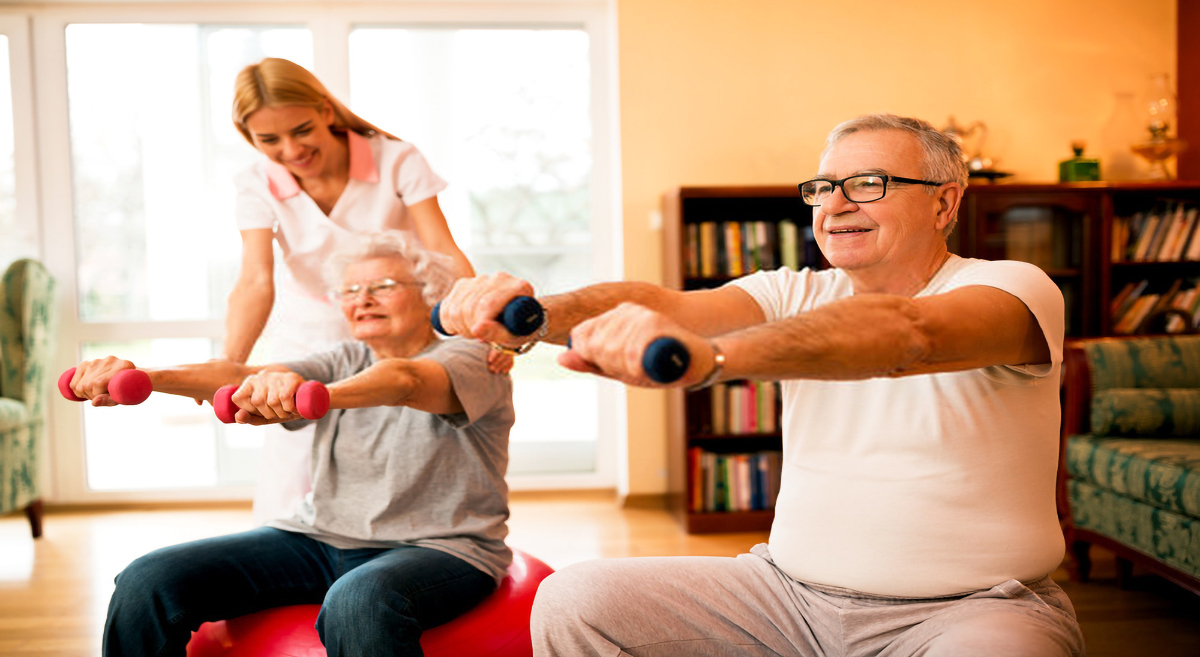The idea of physiotherapy was pioneered by doctors such as James Cyriax and Frederick Matthias Alexander, who experimented with ways to relieve pain.
Nowadays physiotherapy is a common treatment method for those who have sustained an injury or illness.
What is Home Physiotherapy?
If you or a loved one is dealing with a physical injury, chronic pain, or limited mobility, home physiotherapy may be a good option for you.
Physiotherapy is a type of physical therapy that uses different exercises and techniques to help improve movement and function. It can also help to relieve pain and promote healing.
There are many benefits to choosing home physiotherapy over other types of physical therapy or rehabilitation.
First, it is more convenient since you can do it in the comfort of your own home.
Second, it is often more affordable than other options. And lastly, it can be tailored to your specific needs and goals.
If you are interested in learning more about home physiotherapy, please contact us today. We would be happy to answer any of your questions and help you get started on your road to recovery!
Benefits of Home Physiotherapy
There are many benefits to home physiotherapy.
First, it can help you to avoid injury.
Second, it can help you to heal from an injury more quickly.
Third, it can help you to manage your pain. Fourth, it can help you to improve your quality of life.
Types of Home Physiotherapy
There are many types of home physiotherapy exercises that can be done to help improve your overall health and quality of life. Here are some examples of different kinds of home physiotherapy:
1. Cardiovascular Exercise: This type of exercise is important for your heart health and can help to reduce your risk of heart disease. Cardiovascular exercise can be anything from walking, jogging, swimming, biking, or even playing tennis.
2. Strength Training: Strength-training exercises are important for people of all ages because they help to build strong bones and muscles. These exercises can be done with free weights, resistance bands, or even bodyweight exercises like push-ups and sit-ups.
3. Balance Exercises: Balance exercises are important for older adults or anyone at risk for falls. These exercises help to improve your balance and coordination so that you can avoid falls. Some balance exercises include Tai Chi, yoga, or simply standing on one leg while holding onto a chair for support.
4. Flexibility Exercises: Flexibility exercises help to improve your range of motion and flexibility.
These exercises can be done through stretching or by doing activities like yoga or Pilates that focus on flexibility training.
5. Endurance Exercise: Endurance exercise helps to improve your stamina and endurance levels so that you can better handle the physical activity and daily tasks. This type of exercise includes activities like running, hiking, cycling, or using an elliptical machine at the gym
Different Uses of Home Physiotherapy
There are many different ways that home physiotherapy can be used to improve your health and quality of life. Here are just a few ideas:
1. Improve mobility and flexibility: Regular physiotherapy can help to improve your range of motion, making it easier to perform everyday activities.
2. Reduce pain: Physiotherapy can help to relieve pain caused by conditions such as arthritis, osteoporosis, and injuries.
3. Increase strength and endurance: Strengthening exercises can help you to better support your body and reduce the risk of injuries in the future.
4. Prevent falls: Balance training and flexibility exercises can help to reduce your risk of falling, especially as you get older.
5. Recover from injury: If you have recently suffered an injury, physiotherapy can help you to recover faster and reduce your risk of further injury in the future.
Conclusion
I hope this article has given you some ideas on how to get started with home physiotherapy. Remember, there is no one-size-fits-all approach to physiotherapy, so be sure to tailor the exercises and activities to your own needs and abilities.
If you have any questions or concerns, be sure to speak with a physiotherapist or doctor before starting any new exercise program.



